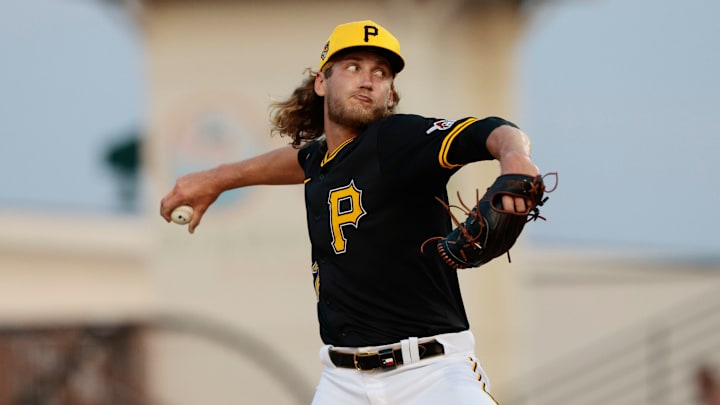The Pittsburgh Pirates must be active in the trade market this offseason. Their lineup needs work, but with their current depth chart, they could definitely deal from a strength to improve a weakness while not greatly affecting the effectiveness of said strength. Their current 40-man roster’s strength is easily their starting pitching depth.
The Pirates have a ton of top pitching prospects, but they also have some arms already on the 40-man roster that could be used in trades this winter. Dealing someone from the 40-man roster might be an attractive route, as they would be trading someone who is on the verge of being in the Major Leagues, if not already in the bigs. If they opt to go this route, who should they deal (for the right price)?
Which players from Pirates' 40-man roster could be traded this offseason?
Luis Ortiz
Coming into the 2024 season, many did not know what to expect from Luis Ortiz. He looked great during a late-season call-up in 2022 and was even ranked as a top 100 prospect by some outlets going into 2023. But Ortiz looked terrible in 2023, posting an ERA approaching 5.00 and a FIP approaching 6.00. Going into this season, Ortiz was tasked with being a long reliever, but after pitching very well in that role, he was stretched out a bit more and ended up making 15 starts along the way.
Ortiz ultimately pitched 135.2 innings. He worked to the tune of a 3.32 ERA, 4.29 FIP, and 1.11 WHIP. He only struck out 19.2% of opponents, but that was a huge improvement from his 14.8% mark the season prior. He also cut his HR/9 down to 1.06. Notably, the most significant improvement was his control. Ortiz walked 12% of batters he went up against in 2023. However, this year, he only handed out a free pass 7.6% of the time.
There are some concerns about Ortiz’s overall performance. His batting average on balls in play was .243 despite a pedestrian 89 MPH exit velocity and 8.8% barrel rate. Neither xFIP (4.59) nor SIERA (4.28) were kind to his surface-level ERA. Needless to say, Ortiz certainly has room for improvement.
He saw his Stuff+ go from just 99 in 2023 to 104 in 2024, thanks in part to multiple different changes he made regarding his mechanics and arsenal. Location+ also put him in a positive light, as he went from 95 to 100.
Ortiz likely has the most value of any player on this list. He is only going to be 26 for all of next season. He still has two seasons of control remaining before hitting arbitration. On top of that, he’s coming off a season where he showed a lot of promise as a starting pitcher, as well as making the necessary adjustments to be successful. Plus, he was a top 100 prospect not that long ago, either.
